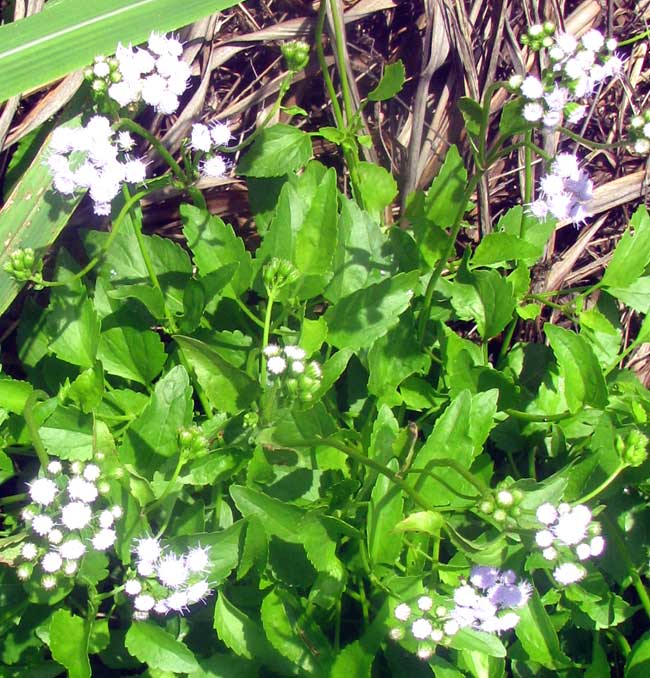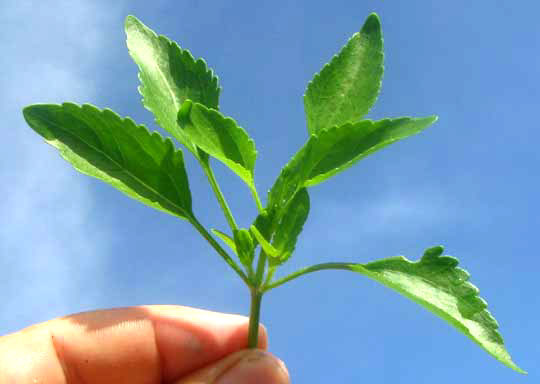Excerpts from Jim Conrad's
Naturalist Newsletter

from the July 31, 2011 Newsletter issued from Mayan Beach Garden Inn 20 kms north of Mahahual; Caribbean coastal beach and mangroves, ~N18.89°, ~W87.64°, Quintana Roo state, MÉXICO
AGERATUM IN THE SAND
Northern wildflower fanciers will find an herbaceous composite flowering along the sand road these days vaguely familiar. Its leaves and pale blue heads are shown above. A close-up of some heads, the one on the left broken open so you can see how its slender flowers are packed so densely together, and how the usual white, fuzzy "pappi" atop the future achene-fruits have been replaced with low, crownlike structures, is shown below:

Some will say the herb looks like one of the blue eupatorium wildflowers, such as the Blue Mistflower, and it's true that it's distantly related. Gardeners might peg it as an ageratum. In fact, it is an ageratum, AGERATUM MARITIMUM, one specializing in sandy, saline soils like ours. The species is found mostly along the coasts from the southernmost tip of Florida through the Caribbean, south at least to Honduras.
The only English name found for the species is Cape Sable Whiteweed, which is a bit unfortunate because the plant isn't a weed but rather a highly adapted wildflower, it's not white, and Cape Sable is the name of the southernmost tip of Florida where the plant can be found, and has nothing to do with the species' main area of distribution, which is along Caribbean coasts. A good name would be Coastal or Caribbean Ageratum.

Above you can see the plant's leaves, which are a little unusual for an ageratum because they're semi-succulent. We've seen that leaf and stem succulence is an adaptation for many species living in salty soil. Succulent leaves retain water between rains.